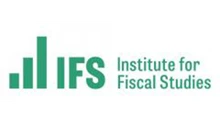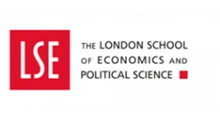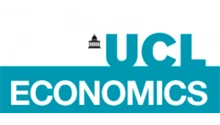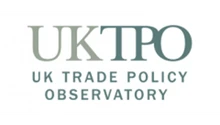China’s economy has suffered from slow consumer spending and a slump in the real estate market. The unpredictable trade war with the United States risks further economic problems, but the current pause in tariff increases plus persistent stimulus from Beijing are keeping the worst outcomes at bay.
Following the April meeting of China’s politburo (the executive committee of the Communist Party of China) – just a couple of weeks after the United States and China had raised tariffs on one another to considerably more than 100% – the communiqué was surprisingly sanguine.
At tariff rates of 145% and 125% respectively, bilateral trade would almost certainly have collapsed in what was, in effect, more trade embargo than trade war, with damaging consequences for both sides. But with a heavy dose of bravado, the politburo acknowledged that while China would have to prepare for external shocks, the economy was building resilience.
A week later, the widely anticipated monthly business survey data for April revealed the biggest slump in export orders since the zero-Covid policies implemented in 2021-22. This was a bad omen for an economy that has been struggling for years to build up domestic consumer demand, and to confront debt capacity and deflation risks, along with a compression in business profits and wages.
China now faces additional threats to tens of millions of jobs. So, it is small wonder that its government was, like the US administration, prepared (according to reports) to kick off talks when senior officials met at the International Monetary Fund (IMF) meetings in Washington the week before the politburo meeting.
The major focus on who blinked, or compromised more, is of fleeting significance. The reality is that both sides were probably relieved to have reached a tentative agreement in Geneva in early May to roll back most of the tariff increases for 90 days and to restart talks about trade and perhaps other things too.
With this as backdrop, it is worth refreshing on the state of China’s economy, and why such excruciatingly high tariffs might have had (or may yet still have) such deleterious effects on what remains an economy suffering fatigue and malaise, as well as being dependent on persistent stimulus.
The Chinese economy is on a stimulus wave for the time being
China’s economy had a bright start to the year, according to official data, with GDP growing by 1.2% in the first quarter over the previous quarter, and by 5.4% over a year ago. The official growth target for 2025 is around 5%.
Exports have been booming for a while and that trend has continued into this year. There have even been some signs that parts of the real estate sector are doing better, although from a very depressed level (more below).
It should also be noted that the economy is still coasting a bit after several fiscal, monetary and real estate stimulus measures were announced last autumn to boost consumer spending, home sales, public borrowing and liquidity.
But economic momentum was predicted to fade as the year continued, with full-year growth possibly hitting 4.75-5%, mostly because of the buoyant first quarter. Sceptics thought that underlying growth might slow to 4% or even less by late this year, and that the government would need to come up with more debt-financed stimulus even to achieve that.
The outcome of the Geneva talks, if sustained after the 90-day pause, would still represent a worse outcome than if the tariff regime in place when Donald Trump returned to office had remained. But China could probably soldier on through it, allowing the exchange rate to decline to compensate, and shipping more exports via third countries to benefit from lower tariffs.
In any event, if the economy were as resilient and well-ordered as Xi Jinping’s government insists, it is hard to see why all those measures were needed last year, why the government has continued to sound warnings about prospects, and why persistent stimulus is required.
In early May, the central bank – the People's Bank of China – eased policy yet again by cutting already low benchmark interest rates to 1.4%, and reducing banks’ reserve requirement ratios, measures that are expected to add about one trillion yuan in liquidity.
The central bank also announced supplementary measures to support consumption, elderly care and the technology sector by setting up or expanding re-lending programmes or, in effect, cheap funding facilities. Although monetary stimulus is likely to be relatively ineffective in current circumstances, more announcements are expected.
The government had already announced in March that the fiscal deficit – the gap between public revenue and public spending – would be increased this year as more public borrowing would be approved. This was partly to subsidise a consumer new-goods-for-old programme, but also to refinance indebted local governments, to fund industrial policies, to expand production and to recapitalise the major banks.
But fiscal stimulus in China isn't as straightforward as many think it should be. The official fiscal deficit has been set this year at 3% of GDP, but this is a very narrow, largely central government-related definition. There are also several off-balance sheet funds that need to be added, many of which are administered by local governments. This takes the deficit to about 8.5-9% of GDP in 2025, and probably still higher in 2026. The IMF’s ‘augmented fiscal deficit’, which comprises still broader public sector liabilities, is not far from double the 2025 estimate.
The government’s fiscal dilemma is that tax revenues have been declining. This is a result of both the weakness of the economy (especially in investment and real estate to which the economy is geared) and excessively low inflation (or deflation). What’s more, it can only raise taxes by further damaging the economy.
At the same time, it could keep sanctioning more borrowing, which the banks in China would be obliged to underwrite. But this would severely inhibit the banks’ ability to make loans to boost growth and their own capital adequacy.
The other option would be simply to print money, but that would almost certainly create strong downward pressure on the exchange rate, which would trigger new sources of financial instability. The two main levers of economic control in China – fiscal revenues and financial credit – are almost out of gas, so to speak, or at least severely constrained. What else could it do?
Boosting consumption
The obvious answer is to boost consumption, which the government has said for months is the top priority. But it is remarkable that it has been trying to do this for many years, and that even today, the main tools are blunt.
Plans to boost consumption have been rolled out ever since the global financial crisis of 2007-09. These have comprised tax reductions and vouchers, urbanisation proposals, policies to boost the supply of consumer products, the development of e-commerce, relaxation of purchase restrictions on homes and cars, new-goods-for-old trade-in programmes and incremental changes to social welfare.
But these attempts have barely lifted the consumption share of GDP from its 36% nadir a few years ago. Even at around 40%, the consumption share is well below the 60% or so recorded both in many advanced economies and in China’s middle-income peer group of countries.
While the government’s political messaging is clear, there has been little in the way of new spending or funding for income, employment, tax reform or welfare programmes, and certainly nothing that would transfer economic ownership and therefore political power to households and private firms from the state sector.
Real estate – signs of life in a long downturn
Part of the reason for the recent and continuing weak state of consumption is the enduring weakness in China’s real estate market. Prices have fallen on average by about 20-30% since the housing peak in August 2021, and they were still falling in most cities in March.
In some of the larger cities – such as Beijing, Guangzhou, Shanghai and Shenzhen – sales and prices have shown some signs of revival following a slew of housing sector relief measures adopted in the last two to three years. This trend hasn’t carried through to smaller cities, where the bulk of the oversupply and weakest conditions exist, and where excess inventory continues to rise.
Industry analysts think that it could take another five years in some cities for the market to find a floor, but maybe 10-15 years in many others.
The country’s demographics do not help. The first-time buyer age cohort (those around 25-35 years old) is expected to decline in numbers for the foreseeable future. With household formation weak, plus a widespread decline in marriage rates, the demand for housing is likely to be perhaps half or less of what it was in the boom years.
All that said, housing construction has fallen so much – by 50-60% – that a cyclical recovery may yet happen to bring construction back to trend. Nevertheless, the sector is likely to remain under pressure for years to come.
In addition, more and more real estate is reverting to state control, as private developers go bust or are operationally impaired. This may help to stabilise the market, but at the cost of yet more wasteful decision-making and capital misallocation.
Trade killer and relief
Post-Geneva, the US tariff on Chinese products now comprises a baseline 10%, plus 20% related to fentanyl. Combined with other sectoral tariffs, and some exemptions, the effective rate is about 40%.
The Chinese tariff on US products is 10%, which with other measures makes the effective rate about 25%. Of course, these levels are far lower than they were a month ago, but far higher than they were before Trump returned to office.
We should remember too that the full array of commercial measures that both sides deploy includes: export controls; entity lists that preclude business with designated firms; restrictions on products or firms that produce dual use (civilian and military) goods and services; foreign investment, semiconductor and artificial intelligence (AI) controls; and Trump’s America First investment policy, which seeks to brush China out of US supply chains, certainly in North America.
There is little question that even if the new, lower, tariff rates endure, there will be a persistent fracturing in bilateral and world trade, with both China and the United States seeking to de-Americanise and de-Sinify their own supply chains.
For China, the incentive to use exchange rate depreciation to compensate for weaker shipments to the United States and to use third countries to ship products indirectly will remain strong. This also contextualises Trump’s attempt to get countries such as India, Mexico and Vietnam to agree trade arrangements that are more friendly to Washington than to Beijing.
The impact on the Chinese and American economies is likely to be remarkable still but manageable, certainly much more so than might have been the case before the Geneva meeting. Unsurprisingly, the yo-yo nature of economic forecasting for China and the United States this year has now embraced a modest upgrade, for the time being at least.
But everything is relative, and the underlying fundamentals, as well as the structure of the US-China relationship, continue to look precarious.
Where can I find out more?
- China vows in politburo meeting to support firms, workers affected by tariffs: Reuters article.
- There are two Chinas, and America must understand both: article by Li Yuan in the New York Times.
- The World Bank in China: link to World Bank articles and reports on China.
- The contentious US-China trade relationship: Council on Foreign Relations.
- Understanding the temporary de-escalation of the US-China trade war: Centre for Strategic and International Studies.
Who are experts on this question?
- George Magnus
- Robert Elliott









































